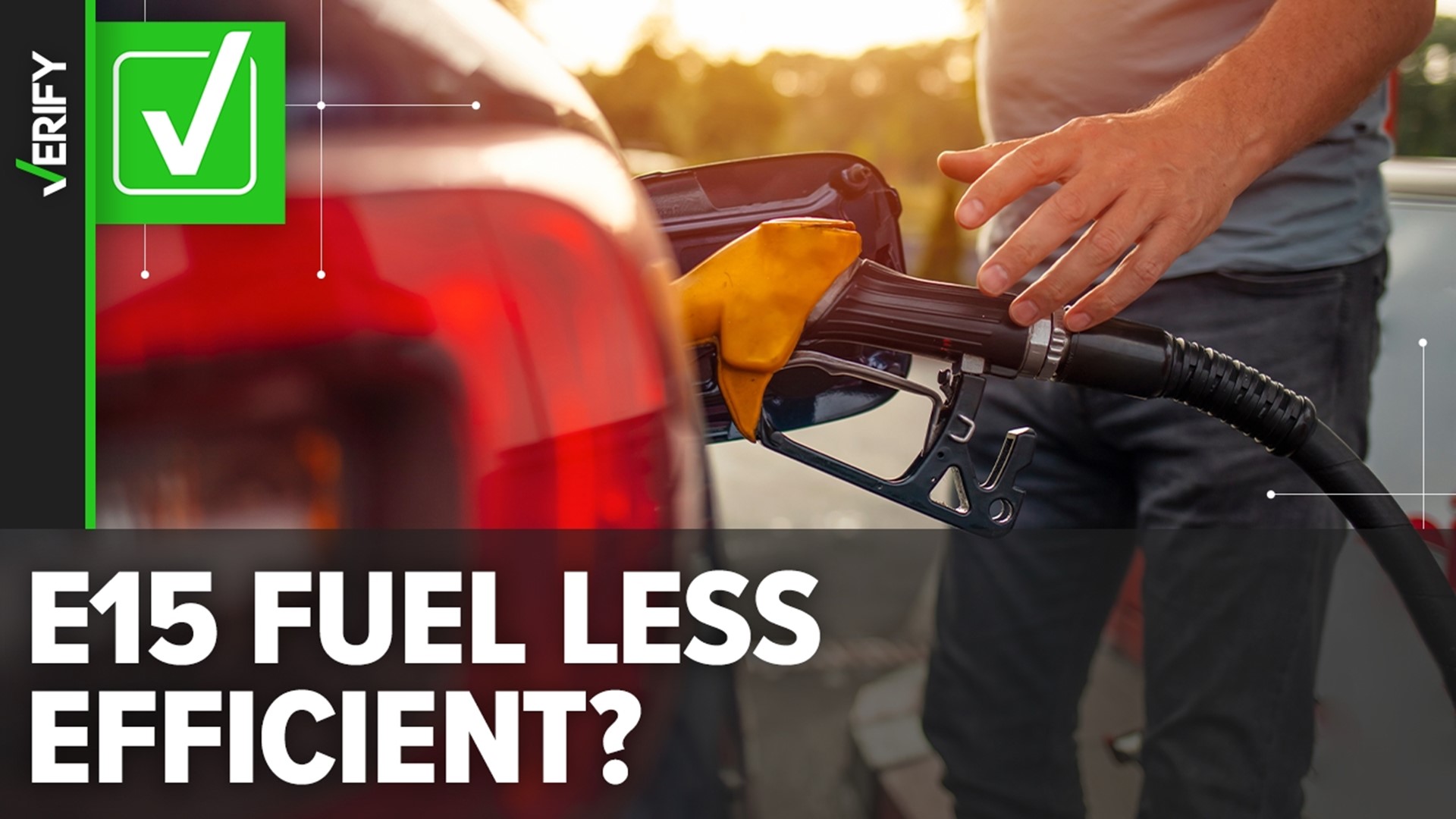Drivers in eight midwestern states will be able to fuel up with a higher blend of ethanol called E15 year-round beginning in April 2025, the U.S. Environmental Protection Agency (EPA) announced on Thursday, Feb. 22.
Before the new EPA rule, E15 was usually banned during the summer months due to air pollution concerns.
E15 is gasoline blended with up to 15% ethanol, which is most commonly made from corn. In 2011, the U.S. Environmental Protection Agency (EPA) approved E15 for use in light-duty conventional vehicles of model year 2001 and newer. E15 is often sold at gas stations as Unleaded 88 for about 10 cents per gallon less than E10, a spokesperson for AAA said.
Some people on social media have claimed that your car’s gas mileage will be lower if you fill up with higher-blend ethanol.
THE QUESTION
Is fuel efficiency worse with E15 gasoline?
THE SOURCES
- U.S. Department of Energy (DOE)
- Patrick DeHaan, head of petroleum analysis at GasBuddy
- U.S. Energy Information Administration (EIA)
- Iowa Renewable Fuels Association
- National Association of Convenience Stores
THE ANSWER
Yes, fuel efficiency is worse with E15 gasoline, but only by a small amount for most drivers.
WHAT WE FOUND
Most types of gasoline available at gas pumps have an ingredient called ethanol mixed in. E10 gasoline, which is a blend of 10% ethanol and 90% gasoline, is sold in every U.S. state and more than 98% of U.S. gasoline contains up to 10% ethanol, the U.S. Department of Energy (DOE) says.
Ethanol contains about one-third less energy than pure gasoline, according to the U.S. Energy Information Administration (EIA). As ethanol content climbs higher, energy dips lower along with gas mileage.
Pure gasoline will give drivers the most miles per gallon, followed by E10 and then E15, but the differences are small. According to the DOE, vehicles will typically go about 3-4% fewer miles per gallon on E10 and 4-5% fewer miles per gallon on E15 compared to pure gasoline.
That means the difference in fuel efficiency between E10 and E15 is only about 1-2%, based on estimates from the DOE and other experts.
The Iowa Renewable Fuels Association (IRFA), a nonprofit representing the state’s industry for “renewable fuels” that include ethanol, says on its website that there is “no noticeable difference” in gas mileage between E15 and E10.
Patrick DeHaan, head of petroleum analysis at GasBuddy, also told VERIFY that there is a very very small difference between the two. Additionally, mileage will likely vary for each driver since it’s based on factors such as driving behaviors and weather conditions, DeHaan said.
Some proponents of the year-round sale of E15, like the National Association of Convenience Stores (NACS), say it will help to “enhance supply and lower prices for all Americans fuel consumers,” while some opponents argue that it actually won’t save drivers much money in the long run.
The biofuels industry and politicians of both parties have portrayed ethanol as a product that helps farmers, reduces prices at the pump and lessens greenhouse gas releases because the fuel burns more cleanly than straight gasoline. However, environmentalists and others have said increased ethanol production can increase carbon releases because it results in more corn production, leading to increased use of fertilizer and greater releases of nitrate.
The Associated Press contributed to this report.

